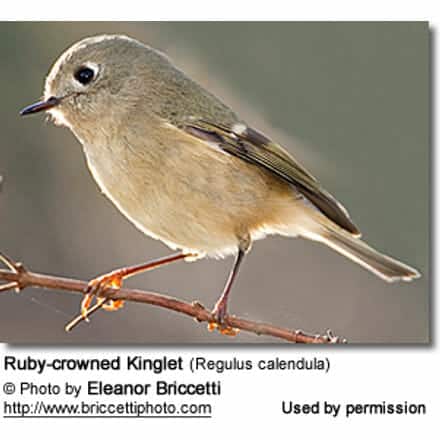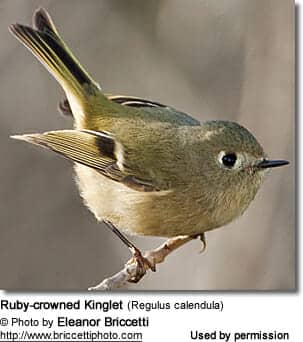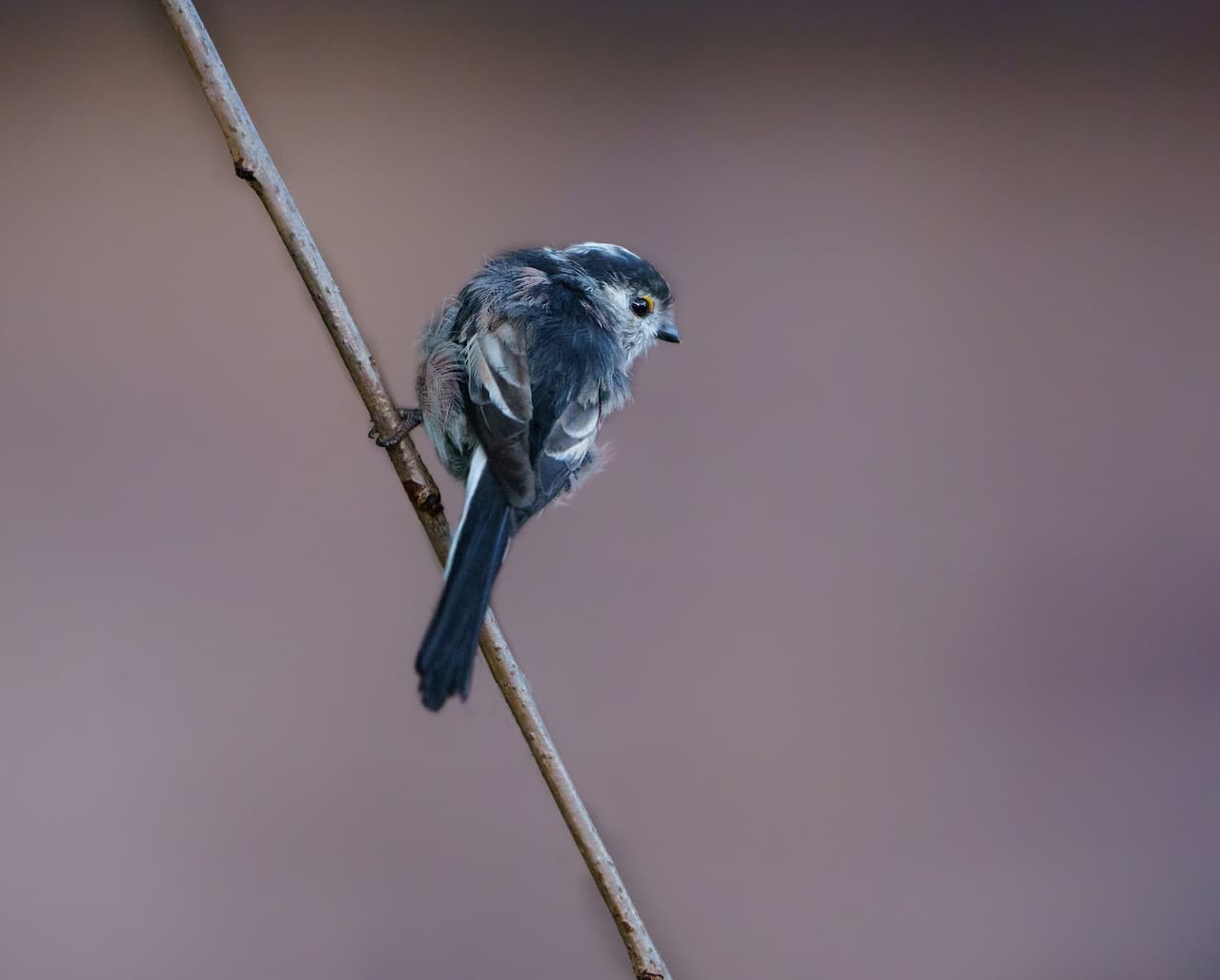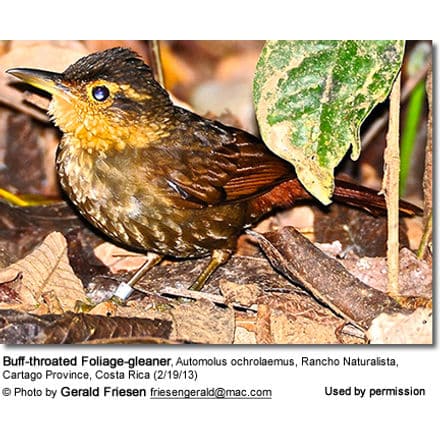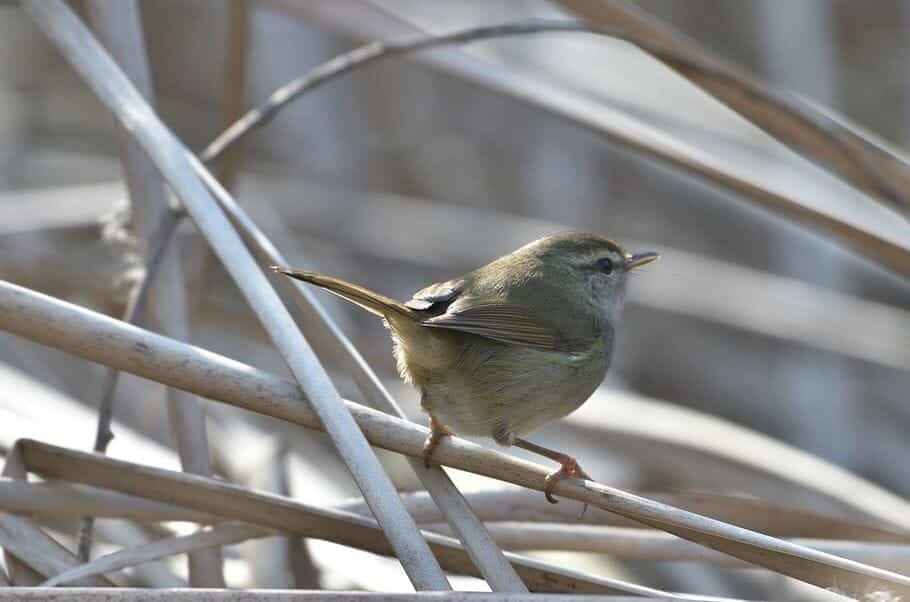Ruby-crowned Kinglets
The tiny Ruby-crowned Kinglets (Regulus calendula) and the Golden-crowned Kinglet are the only two Kinglet species found in North America, and they can be found nearly everywhere on that continent.
It is one of North America’s smallest birds and is most easily recognized by its constant wing-flicking.
The only areas in which they do not dwell are the very coldest, northernmost locations. The Kinglet can survive and even flourish in the freezing northern climates. No one knows how these tiny birds survive in temperatures that may fall to as low as -30° F.
Distribution / Range
In the summer, the Ruby-crowned Kinglet can be observed throughout most of Canada, into Alaska, and throughout the western United States as far south as New Mexico. It seeks out regions that have temperate, cooler winters and warm summers. These boreal regions exist in Canada and Alaska and include the northern states and mountainous western states as far south as Arizona and New Mexico.
In winter, these birds migrate south, traveling through the central and eastern United States to spend the winter in the southern US and Mexico. They also winter all along the Pacific Coast from Baja, California to British Columbia. Some smaller populations remain year-round along the border between Arizona and New Mexico.
Ruby-crowned Kinglets seek out forests and thicket habitats that provide good shelter and protection from predators; those locales are generally in coniferous or mixed forests.
These active birds aren’t fearful around humans and will frequent backyards that have the proper trees, bushes, and bird-friendly landscaping. To attract these tiny birds to your garden, provide them with bushes and trees that produce small fruits, and avoid spraying with insecticides.
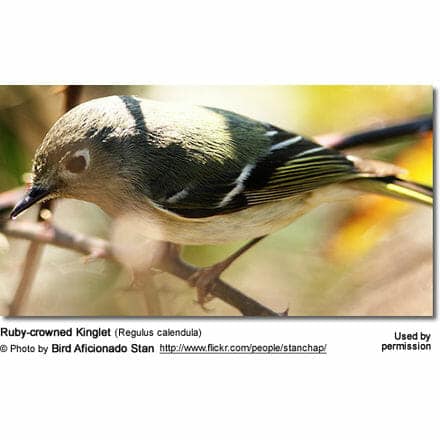
Description
The Ruby-crowned Kinglets is known to be one of North America’s smallest songbirds. It is about the size of the average hummingbird, measuring only 3.75 to 4.5 inches (9.5 – 11.43 cm) in length with a wingspan of 6.75 to 7.5 inches (17 – 19.1 cm) and a weight of 0.21 – 0.28 oz (6 to 8 grams). He is similar in size and plumage to the other species of Kinglet, but the Ruby-crowned is the largest Kinglet in the genus.
The adult male Ruby-crowned Kinglet is a round, tiny bird with a narrow, black beak. Its compact body is olive overall, and the short, rounded wings are highlighted with shades of bright yellow and green. The dark eye is surrounded by an incomplete white ring. The wings and tail feathers are olive green with white and yellow tips, and the wings display several white wing bars.
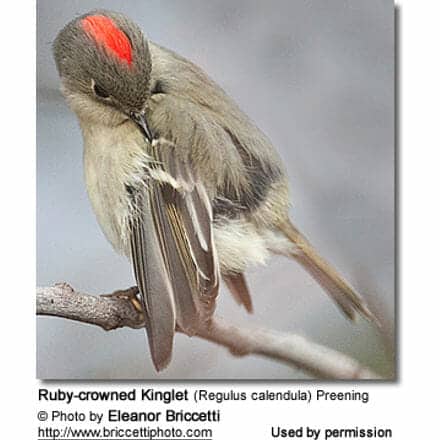
The male raises his patch of red crown feathers only when excited or during courtship; otherwise, it is hidden by the surrounding black feathers. His crest is a brilliant, scarlet red, and his crown does not sport the black stripes of the other species. Its breast and belly are olive-buff, and the back and rump are grey-green. Their black legs sit atop yellow feet.
This is a dimorphic species.
The female’s appearance is the same as the male’s, except that she does not have the red crown patch.
The juvenile is similar in appearance to the adult female.
Similar Species
Resembles the only other North American Kinglet species – the Golden-crowned Kinglet, except the latter can be identified by the bold black and white striped facial pattern and gold crown patch. The Ruby-crowned Kinglet has a red crown patch (which is, however, often hidden), a plain facial pattern, and bold eye rings.
Diet / Feeding
The Ruby-crowned’s diet consists mainly of insects and spiders, but it also consumes berries and other fruits, seeds, and tree sap. Always active and moving, it forages constantly, using its needle-like beak to search for food in the trees and ground foliage. It flicks its wings and tail constantly as it hops, hovering over and flitting about the foliage hunting for insects.
Breeding / Nesting
Ruby-crowned Kinglets nest in the northern, mountainous woodlands of Alaska, Canada, and the Rocky Mountains. They prefer the spruce-fir forested areas near a water source; the black spruce bogs are a particularly choice breeding habitat.
The females arrive in the nesting areas in early May, and these monogamous birds will begin to exhibit reproductive behavior soon after. They build their nests high in the conifer trees near the trunks. Once the female claims a conifer tree, she builds a cup-shaped nest composed of moss, lichens, fine grasses, and shredded bark; the nest may be pensile (suspended from a branch), or it might be placed upon a branch. It is often hidden from view. She then lays 5-12 eggs—the highest number of eggs to a clutch of all the passerine birds in North America.
The female incubates the eggs by herself for about 12 days. The altricial chicks hatch in two weeks and are cared for by both parents. At about 16 days, the chicks leave the nest. The mated pairs raise only one brood per year.
Calls / Vocalizations
The Ruby-crowned Kinglet’s call is heard quite often as a high-pitched, frantic whistle or warble. It alternates between a slower and more rapid tempo. A staccato “chip-chip-chip” is another common call.
These calls and songs are inaudible to the human ear in most cases. If one is fortunate enough to hear them, he will notice that the vocalizations are a combination of chattering and warbling notes, sounding like tsee-tsee-tsee or a raspy d’dit or ji-dit. These songs are frequently sung when the birds are migrating. The call will begin with several very high-pitched notes and suddenly change to a rich, loud warble.
Other vocalizations include alarm calls, simple contact calls, and begging calls produced by chicks.



